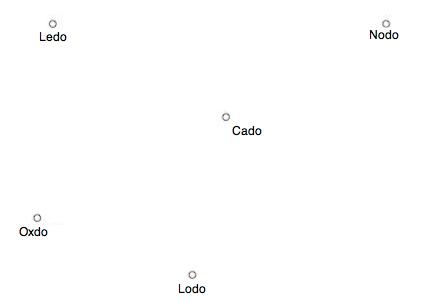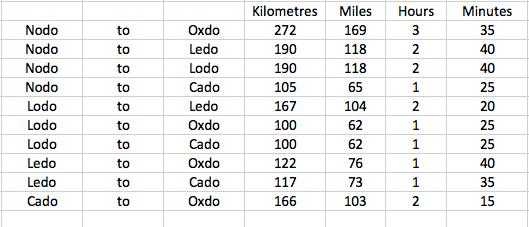Copyright © University of Cambridge. All rights reserved.
'Journeys' printed from https://nrich.maths.org/
Show menu
Why do this problem?
This problem may be used to introduce pupils to handling more complicated data and gives them the opportunity to calculate using distance and time.
Possible approach
You could have a map of your country to start off this problem (or for pairs of children to have an atlas or road map) and ask pupils to locate four particular cities. You can then draw attention to the simplified map in the problem, which you could alter to include four real places if you wish. To encourage learners to engage with the information in the table, you could ask a few starter
questions, such as "how far is the journey from Oxdo to Lodo?" and "what journeys could you make in under 3 hours?".
This problem lends itself to being tackled in groups, for example of three or four pupils. Ask each group to try to answer the questions and as they are working, look out for those groups who are communicating well and perhaps those who divide the task amongst themselves. You might like to ask groups who have organised their approach well to share their strategies with everyone else. The
main point of this activity is for children to be immersed in the data so that they begin to use it confidently.
You might like to have a whole-class discussion about the ambiguity of "long" in this context. Does it mean distance-wise or time-wise? Does it matter?
Key questions
What other journeys could you make, for example, starting at Nodo and ending at Oxdo?
How are you going to keep track of which routes you have found?
What pieces of information do you think would be good to find in order to work out the total distance and total time taken?
What would you like to look at first in trying to get an answer?
Possible extension
You could encourage the pupils to create their own questions based on the information given.

